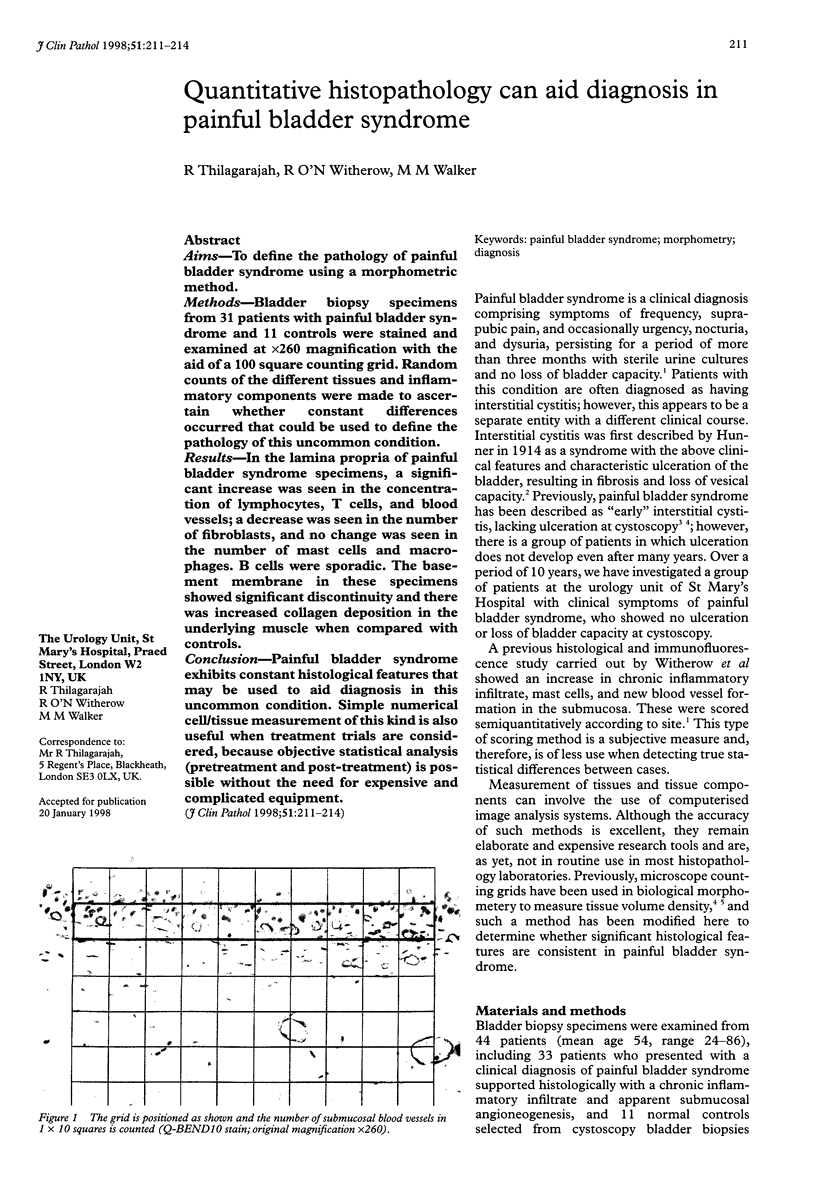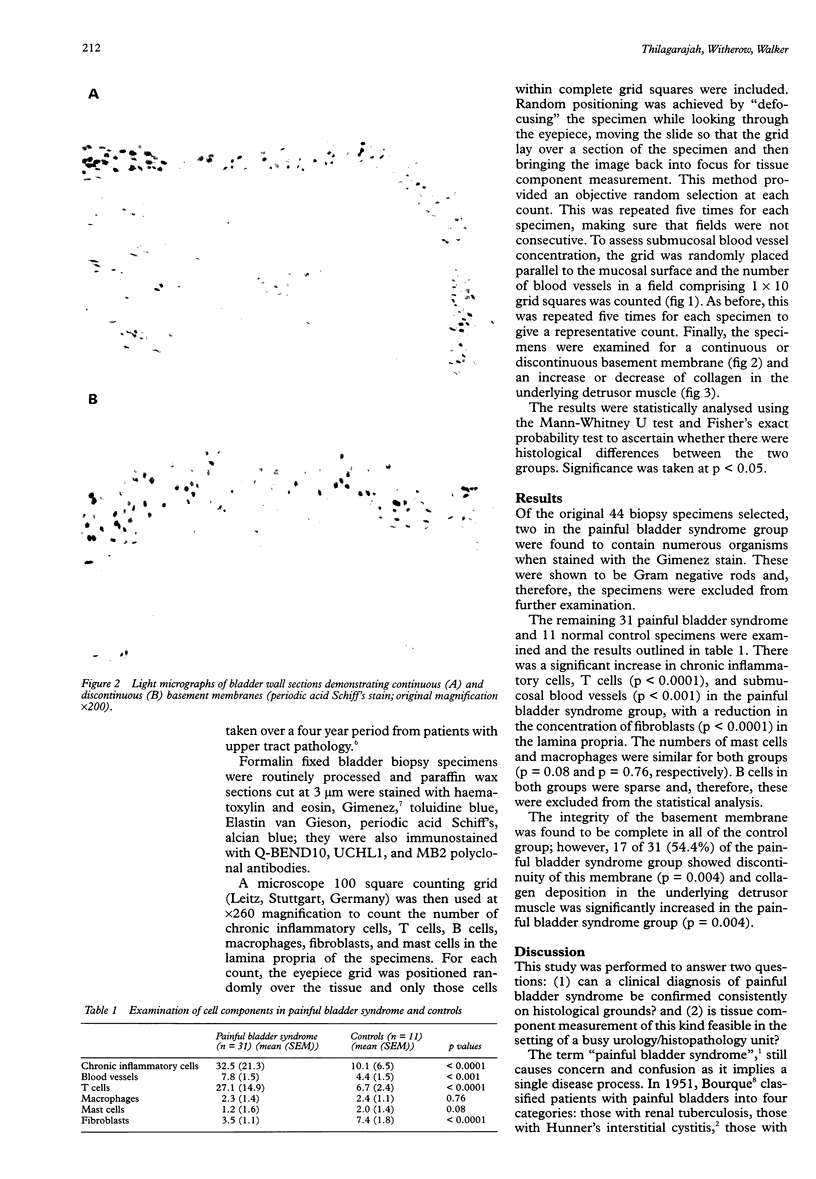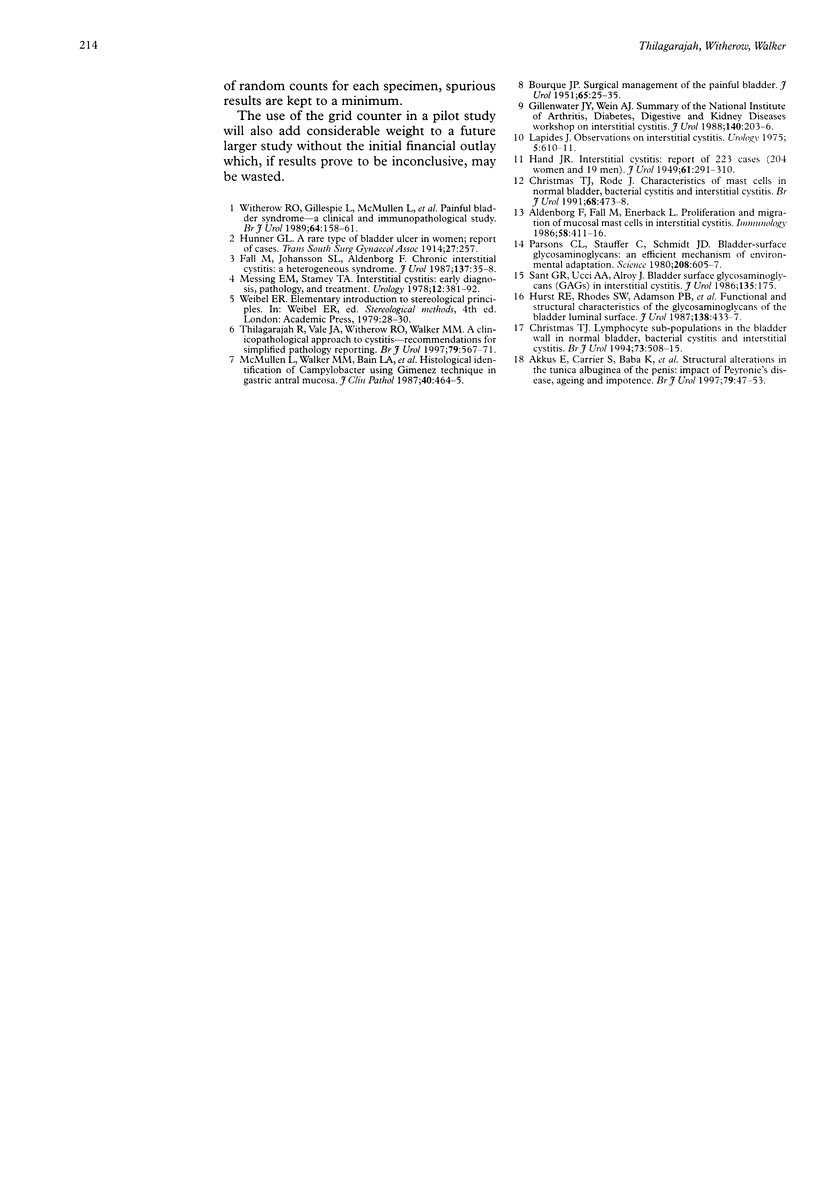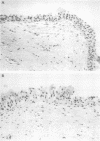Abstract
AIMS: To define the pathology of painful bladder syndrome using a morphometric method. METHODS: Bladder biopsy specimens from 31 patients with painful bladder syndrome and 11 controls were stained and examined at x260 magnification with the aid of a 100 square counting grid. Random counts of the different tissues and inflammatory components were made to ascertain whether constant differences occurred that could be used to define the pathology of this uncommon condition. RESULTS: In the lamina propria of painful bladder syndrome specimens, a significant increase was seen in the concentration of lymphocytes, T cells, and blood vessels; a decrease was seen in the number of fibroblasts, and no change was seen in the number of mast cells and macrophages. B cells were sporadic. The basement membrane in these specimens showed significant discontinuity and there was increased collagen deposition in the underlying muscle when compared with controls. CONCLUSION: Painful bladder syndrome exhibits constant histological features that may be used to aid diagnosis in this uncommon condition. Simple numerical cell/tissue measurement of this kind is also useful when treatment trials are considered, because objective statistical analysis (pretreatment and post-treatment) is possible without the need for expensive and complicated equipment.
Full text
PDF



Images in this article
Selected References
These references are in PubMed. This may not be the complete list of references from this article.
- Akkus E., Carrier S., Baba K., Hsu G. L., Padma-Nathan H., Nunes L., Lue T. F. Structural alterations in the tunica albuginea of the penis: impact of Peyronie's disease, ageing and impotence. Br J Urol. 1997 Jan;79(1):47–53. doi: 10.1046/j.1464-410x.1997.26511.x. [DOI] [PubMed] [Google Scholar]
- Aldenborg F., Fall M., Enerbäck L. Proliferation and transepithelial migration of mucosal mast cells in interstitial cystitis. Immunology. 1986 Jul;58(3):411–416. [PMC free article] [PubMed] [Google Scholar]
- BOURQUE J. P. Surgical management of the painful bladder. J Urol. 1951 Jan;65(1):25–35. doi: 10.1016/S0022-5347(17)68458-1. [DOI] [PubMed] [Google Scholar]
- Christmas T. J. Lymphocyte sub-populations in the bladder wall in normal bladder, bacterial cystitis and interstitial cystitis. Br J Urol. 1994 May;73(5):508–515. doi: 10.1111/j.1464-410x.1994.tb07635.x. [DOI] [PubMed] [Google Scholar]
- Christmas T. J., Rode J. Characteristics of mast cells in normal bladder, bacterial cystitis and interstitial cystitis. Br J Urol. 1991 Nov;68(5):473–478. doi: 10.1111/j.1464-410x.1991.tb15388.x. [DOI] [PubMed] [Google Scholar]
- Gillenwater J. Y., Wein A. J. Summary of the National Institute of Arthritis, Diabetes, Digestive and Kidney Diseases Workshop on Interstitial Cystitis, National Institutes of Health, Bethesda, Maryland, August 28-29, 1987. J Urol. 1988 Jul;140(1):203–206. doi: 10.1016/s0022-5347(17)41529-1. [DOI] [PubMed] [Google Scholar]
- Hurst R. E., Rhodes S. W., Adamson P. B., Parsons C. L., Roy J. B. Functional and structural characteristics of the glycosaminoglycans of the bladder luminal surface. J Urol. 1987 Aug;138(2):433–437. doi: 10.1016/s0022-5347(17)43180-6. [DOI] [PubMed] [Google Scholar]
- Lapides J. Observations on interstitial cystitis. Urology. 1975 May;5(5):610–611. doi: 10.1016/0090-4295(75)90110-7. [DOI] [PubMed] [Google Scholar]
- McMullen L., Walker M. M., Bain L. A., Karim Q. N., Baron J. H. Histological identification of Campylobacter using Gimenez technique in gastric antral mucosa. J Clin Pathol. 1987 Apr;40(4):464–465. doi: 10.1136/jcp.40.4.464. [DOI] [PMC free article] [PubMed] [Google Scholar]
- Messing E. M., Stamey T. A. Interstitial cystitis: early diagnosis, pathology, and treatment. Urology. 1978 Oct;12(4):381–392. doi: 10.1016/0090-4295(78)90286-8. [DOI] [PubMed] [Google Scholar]
- Parsons C. L., Stauffer C., Schmidt J. D. Bladder-surface glycosaminoglycans: an efficient mechanism of environmental adaptation. Science. 1980 May 9;208(4444):605–607. doi: 10.1126/science.6154316. [DOI] [PubMed] [Google Scholar]
- Thilagarajah R., Vale J. A., Witherow R. O., Walker M. M. A clinicopathological approach to cystitis--recommendations for simplified pathology reporting. Br J Urol. 1997 Apr;79(4):567–571. doi: 10.1046/j.1464-410x.1997.00031.x. [DOI] [PubMed] [Google Scholar]
- Witherow R. O., Gillespie L., McMullen L., Goldin R. D., Walker M. M. Painful bladder syndrome--a clinical and immunopathological study. Br J Urol. 1989 Aug;64(2):158–161. doi: 10.1111/j.1464-410x.1989.tb05978.x. [DOI] [PubMed] [Google Scholar]





